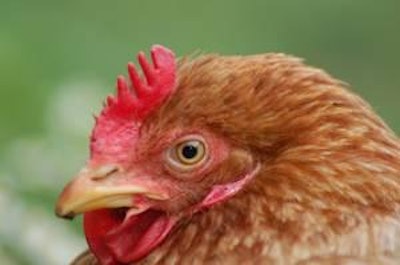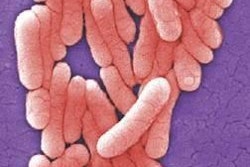
Necrotic enteritis was first recognized as a separate disease entity in broilers more than 40 years ago. For many years, it was a sporadic disease of minor economic importance. Recently however, necrotic enteritis is considered one of the most threatening emerging diseases in the broiler industry worldwide. The disease is also commonly observed in turkeys, and it has been reported also in commercial layers.
In broilers, necrotic enteritis presents itself as a sudden increase in mortality occurring at any time when the birds are between two and six weeks old. Mortality may reach up to 1% per day. When left untreated, this may continue for one to two weeks.
In the last few years, a subclinical form of the disease has become more prevalent. It is characterized by poor digestion, reduced weight gain and increased feed conversion ratio, without obvious increase in mortality. These disease signs, however, are not specific. When there is a suspicion of necrotic enteritis, birds should be submitted for necropsy. The hallmark of this disease is the presence of typical necrotic lesions in the intestinal tract.
Economic consequences
Necrotic enteritis is now a worldwide problem in the broiler industry. Global economic losses as a consequence of necrotic enteritis outbreaks have been estimated at over $2 billion annually. The subclinical form of the disease is considered more of an economic burden than the clinical form, because of its insidious nature.
What causes the disease?
This is an infectious and contagious disease caused by an anaerobic, spore-forming bacterium, Clostridium perfringens. The spores allow these bacteria to survive for years under extreme environmental conditions. As a consequence, swabs taken on poultry farms from floors, fans, walls, water pipes, nipple drinkers, feed, litter, boots of the staff, and even from soil and puddles outside the house or from droppings of wild birds living in the surroundings of the poultry houses all yield Clostridium perfringens when tested in the lab.
These bacteria thus are widespread in the environment. This explains the worldwide spread of the disease. Indeed, the spores have made this bacterial species the most widespread infectious agent in the world. Consequently, Clostridium perfringens can cause a variety of infectious diseases in different animal species, including lambs, beef calves and piglets.
This extraordinary disease causing capacity is explained by a second important characteristic of these bacteria, which is their ability to produce a wide range of different toxins. The toxins are actually causing the disease.
Fortunately, the mere uptake of Clostridium perfringens spores by the birds does not always lead to an outbreak of necrotic enteritis. Clostridium perfringens indeed can be found in the intestinal tract of any healthy bird, albeit in low numbers. Only under certain conditions, when these bacteria get the opportunity to multiply at a very high rate in a short period of time, will disease develop.
It was discovered recently that only specific strains of Clostridium perfringens can cause necrotic enteritis in broilers. Even these strains can only cause disease under specific conditions.
The predisposing conditions that facilitate explosive multiplication and toxin production in the chicken intestinal tract are quite well known. They include dietary factors as well as management factors. High protein content of the diet (particularly proteins of animal origin) and wheat-based diets (containing high amounts of non-starch polysaccharides) are probably the most important nutritional factors. A high coccidiosis challenge is another important predisposing risk factor. Additional factors are intercurrent immunosuppressive diseases like Gumboro disease, lack of hygienic measures and seasonal effects.
Why necrotic enteritis went out of control
Necrotic enteritis was not a major problem in Europe until growth promoting antibiotics were banned from poultry feed. Legislation banning antibiotic growth promoters first went into force in Norway, and several years later this was implemented in the European Union.
The same time sequence was seen in the rise in necrotic enteritis problems, thus underlining the protective effect of the in feed antibiotics (Figure 1). In Norway, necrotic enteritis problems were reduced again following the authorization of Narasin as feed additive.
What can we do here and now?
Research at our Ghent University lab and by others recently showed that most Clostridium perfringens strains isolated from birds with necrotic enteritis can be used to experimentally induce necrotic enteritis, whereas the vast majority of strains isolated from healthy broilers cannot cause necrotic enteritis. This confirms that only specific strains of Clostridium perfringens are pathogenic for broilers.
Consequently, one strategy could be to try and avoid introducing broiler pathogenic Clostridium perfringens strains on the farm. In line with this, separate clothing, boots and hand-washing facilities in each poultry house, and a turn-over time of more than 14 days between consecutive flocks, were all identified as protective factors against necrotic enteritis in a field study in the U.K. From these studies it can be concluded that general hygienic measures on the farm certainly can help to reduce the risk of necrotic enteritis.
Since the emergence of necrotic enteritis in broilers worldwide, and particularly since the ban on growth promoting antibiotics in broiler feed in the European Union on Feb. 1, 2006, a wealth of studies have been published, evaluating all sorts of remedies against necrotic enteritis. These range from bacteriocins to probiotics, phytogenics, bismuth salts, enzymes, etc.
Unfortunately, the results of these studies are difficult to compare. Some still use Clostridium perfringens bacterial cell counts as the sole criterion, but we know now that strain differences are important. Others use experimental models with mortality as a read out. Mortality, however, is a highly variable criterion, which makes statistical evaluation difficult. The most reliable criterion to evaluate any preventive or curative measure against necrotic enteritis no doubt is the extent and the severity of the intestinal necrotic lesions, as this is the hallmark of the disease.
One recent study showed that feeding a diet supplemented with 50 ppm or more of bismuth citrate significantly reduces the necrotic lesions in the intestine. This study and also many others show small to moderate reductions in lesions under experimental conditions. However, in our experience and using our experimental model, very few measures, other than antibiotics (active against Clostridium perfringens) added to the drinking water in curative concentrations can completely block the development of necrotic lesions in the intestine of broilers.
Future perspectives
Notwithstanding the wealth of information on all sorts of feed additives and other products for which a protective effect against necrotic enteritis is claimed, the broiler industry is still struggling to control this disease.
One problem is the lack of comparative data on the efficacy of the products. Another problem is the lack of understanding on what actually triggers the explosive multiplication and toxin production by the poultry pathogenic Clostridium perfringens strains.
Better understanding may ultimately lead to the development of a targeted medication or a targeted vaccinal protection strategy. Although the first vaccines against necrotic enteritis are coming on the market right now, there is definitely room for improvement. Ideally, a strong vaccinal protection should improve the average daily gain and feed conversion rate. Finally, strong protection against necrotic enteritis would allow more flexibility in feed formulation.
















